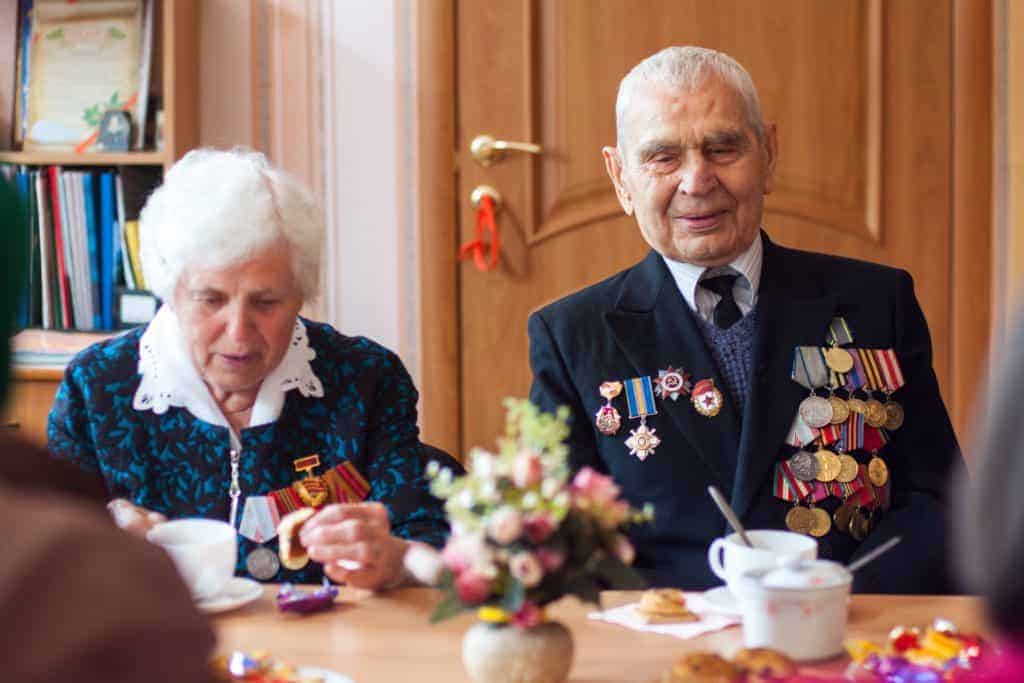Falls are a prime reason for loss of mobility, accessibility, and independence- and visual impairment contributes to the risk of such an accident. It is vital for seniors to take care of their eyes throughout the lifespan, but particularly if they suffer from physical limitations. Pairing a mobility issue and inability to see clearly could be a recipe for disaster. Consider this during National AMD and Low Vision Awareness Month this February.
There is no better time than February to make a new commitment to preserving and enhancing your eyesight with AMD/Low Vision Awareness Month. Visual impairment can contribute to falls- which can have deadly consequences for older Americans. The CDC estimates that senior falls cost over $30 billion a year in health care costs; one in three adults, 65 and older falls annually which impacts the autonomy and life quality for at least 20-30% permanently. In many instances, simple mobility aids would have dramatically helped and, perhaps, prevented the fall.
Fall Risks
It may seem like a stretch to find a distinct correlation between vision and the heightened risk of falls, but the truth is that falls among seniors are debilitating and should be prevented at all costs- including by taking care of your sight. Intrinsic factors are causes of falls associated with the individual, like health risks or failing vision. Extrinsic factors are elements of your environment that contribute to the fall, like poor lighting or wet floors.
Intrinsic Issues
So, when it comes to intrinsic factors for a nasty fall, vision-related issues top the list, though the exact impairment may vary. For instance, some older individuals may experience a reduction in depth perception or a poor visual field. These may be brought on by glaucoma or diabetes-related vision problems. Some seniors may have a reduced sense of contrast sensitivity which may make it challenging to know when the sidewalk ends or a curb is present. All these intrinsic, vision-related issues can be the cause of a nasty, even life-altering fall.
Loss of Balance
With age often comes a decrease or loss of balance and subsequently, may result in a fall. Vision helps manage the vestibular system which encompasses the tissue and bone matter of the inner ear. When this area of the ear is disrupted or injured, a loss of balance and equilibrium may result. Since the vestibular system works in tandem with other sensi-motory systems of the body, a fall is practically inevitable. In the case of a loss of balance, see your medical provider pronto.
Age-Related Vision Loss
With age comes a loss of vision for many Americans, due to normal circumstances. However, some deterioration of sight may be related to issues that are not normal parts of the aging process. For example, cataracts are quite common but easily resolved with surgery. Without treatment, cataracts will be life-changing, possibly even blinding. Since this condition is marked by a cloudiness of the eye lens, falls are not uncommon among those with cataracts.
Age-Related Macular Degeneration (AMD)
What is Age-Related Macular Degeneration, or AMD, anyway? It is a serious eye condition that stems from degeneration of the retina, the part that distinguishes fine details in what you see. Individuals living with AMD have progressively declining or distorting vision that makes it hard to do everyday things, like drive, watch TV, or write. It can impact mobility as sight lessens, individuals with AMD rely on peripheral vision to navigate their way around- which could easily manifest in an injurious fall. AMD develops over time, so regular eye care visits and examinations are critical- particularly if you are over the age of 50. There is no cure for this disease and it will erode your vision making it far more challenging to live your normal life.
National AMD and Low Vision Awareness Month
February is National AMD and Low Vision Awareness Month. Though you may not have heard of this annual event, it is vital to share the value of eye care and maintenance. AMD and low vision lead the way as causes for vision loss in adults, 50 and over. It is estimated that nearly 15 million Americans live with this debilitating condition. Think you are at risk for AMD and Low Vision? Be cognizant of the symptoms and notify your eye care professional if you are experiencing any of the following:
- Wavy or wiggly lines
- Black spots that impede your range of vision
- Difficulty seeing fine details
- Colors are muted and less vibrant
Don’t run the risk of a nasty fall and subsequent loss of your independence; age in place by preserving and maintaining your vision with preventative visits to eye care providers. Could you use some help getting around? Come see the industry experts at Pacific Mobility. Mobility aids like grab-bars and canes can help prevent a fall that can have serious health- and life- repercussions. Don’t compromise your wellbeing; talk to the professionals to learn more today.
President, Husband, Father, Grandfather Graduate of UC Davis- Bio Sci Major- Go Aggies! Jeff has extensive experience in all of Pacific Mobility’s products and services, and specializes in accessibility products as well as stairlifts, ceiling lifts and custom wheel chairs. His hobbies include spending time with family, gardening, mountain biking, exercising and off road motorcycle riding.
24 years as Owner/President of Pacific Mobility Center – selling, installing, and servicing stairlifts, porch lifts, ceiling lifts, pool lifts, handicap ramping, specialty wheelchairs, scooters, power wheel chairs, and other power mobility devices
Certified Environmental Access Consultant since 2008
Licensed General Contractor since 1998
Certified Aging in Place Specialist since 2016
Board Member for Home Access Professionals
Member of Association of Members of the Accessibility Equipment Industry (AEMA)




